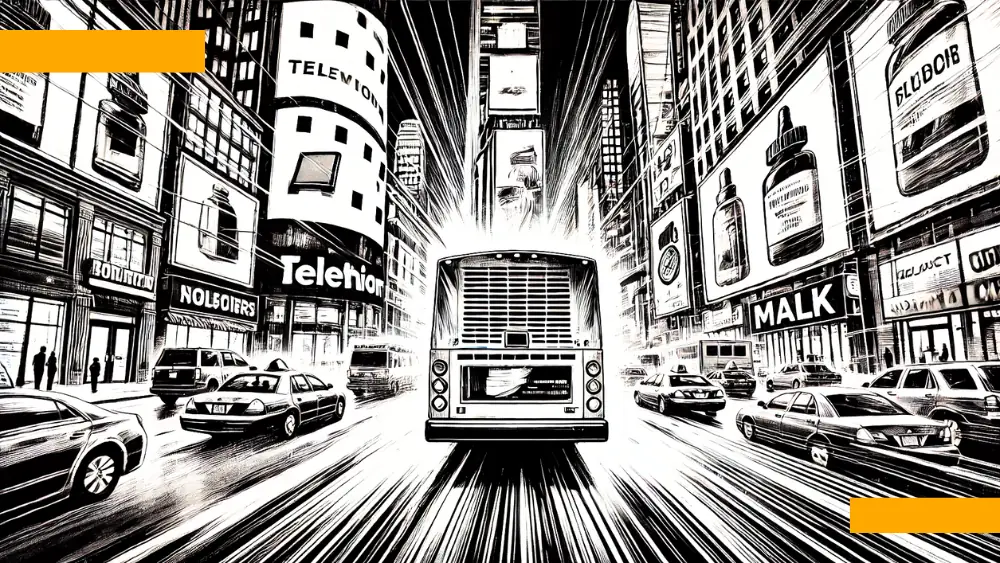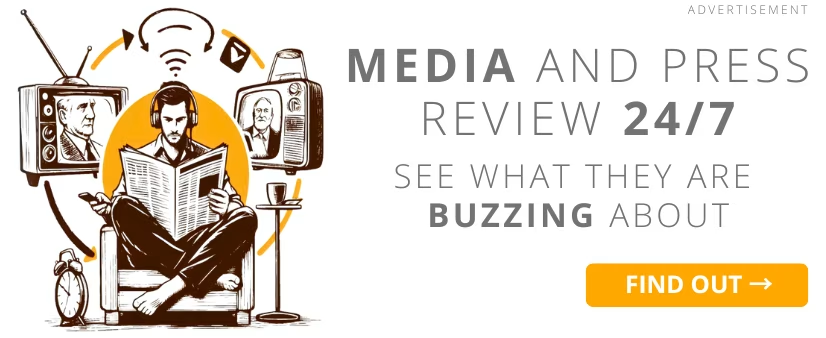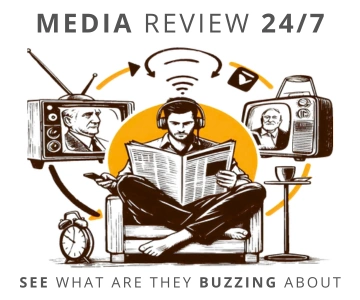 illustration: DALL-E
illustration: DALL-EIn 2024, out-of-home (OOH) advertising in Poland saw strong growth, reaching a value of PLN 806 million. That’s a 9.7% increase from the previous year, according to the "OOH Advertising in Poland" report by OOHlife Economic Chamber. The Digital OOH segment expanded especially rapidly, with a value increase of 32.2%, reaching PLN 231.85 million. The market has entered a new phase of development where digitization, automation, and integration with other communication channels are taking the lead.
Billboard or screen? The market is going digital
The outdoor advertising market in Poland consists of three main segments: classic OOH, public transport advertising, and Digital OOH (DOOH). While traditional formats still dominate in terms of market share, it`s the digital format that is growing the fastest. In 2024, DOOH accounted for nearly 29% of the market, compared to just 11.3% five years ago.
| Outdoor advertising segment | Value (PLN million) | Year-on-year growth |
|---|---|---|
| Classic OOH | 521.73 | -0.08% |
| City transport | 52.46 | +29.6% |
| Digital OOH | 231.85 | +32.2% |
| Total | 806.04 | +9.7% |
Despite a drop in the percentage share of traditional formats (from 69.1% to 64.7%), their value remained stable. This segment is led by 18 m² billboards and illuminated citylights, which generate nearly 70% of revenue here.
Bus as billboard and the digital offensive
The public transport advertising segment performed surprisingly well. The value of campaigns on internal and external media in buses, trams, and the metro increased by nearly 30%. This growth was driven by advertisers focusing more on smaller cities and combining traditional spaces with digital LCD screens.
- Main clients included brands from the telecom, retail, food, and media industries.
- New developments included campaigns by local governments and the growing importance of vehicle route tracking systems, which allow for more precise targeting.
Public transport advertising is becoming not just a visual element but also an analytical tool. Digital media saw the fastest growth. The 32.2% increase was fueled by a growing number of public screens - at bus stops, shopping malls, airports, and onboard public and rail transport vehicles.
- DOOH now makes up 28.8% of the total market.
- In Q4 2024, its share hit a record 32.6%.
- Screens are managed in real time via programmatic technology, enabling dynamic content personalization.
This makes DOOH an attractive option for brands seeking to combine precise targeting with broad reach.
Who’s investing in OOH?
Ad spending in 2024 was concentrated in several key sectors:
- Retail - 15% share of the OOH market
- Telecom - 13%
- Media - 12%
- Food - 11%
- Beverages and alcohol - 8%
For Digital OOH, the structure is similar, though the food sector has a slightly larger share and retail a bit less. According to the authors of the OOHlife Economic Chamber report, the outlook for 2025 is just as dynamic. Influences may include the presidential election, continued digitization, the growth of analytics tools, and the rising importance of sustainability - more companies are investing in energy-efficient formats and green technologies.
COMMERCIAL BREAK
New articles in section Marketing and PR
Dance in the media mirror. Between culture, business and viral fame
KFi
Over 78,000 media pieces, 1.6 billion potential views, and 197,500 social media mentions-dance in Poland is no longer niche. With a combined media value exceeding PLN 800 million, it now outperforms MMA, handball, and hockey.
PR in Poland. Ranking of the largest public relations agencies 2025
KFi
The smallest teams often generate the most publications, and agencies outside Warsaw are increasingly capturing media attention. This unexpected distribution of power is one of the key findings from the 2025 PR Agency Ranking in Poland, developed by Widoczni and IMM.
Connected TV and borderless advertising. The ID5 report
KFi
Viewers are moving away from cable TV. And they are doing it en masse. Already 86% of Europeans watch content via Connected TV and global ad spend in this segment is set to double by 2028. The industry is undergoing a communication revolution.
See articles on a similar topic:
Contextual Advertising in Print Media. PBC Measured Its Effectiveness
BARD
Print advertising, when placed in the appropriate editorial context, attracts 67% more attention than ads in other sections, according to research conducted for Polskie Badania Czytelnictwa (PBC). Contextual ads hold the reader’s gaze longer and engage them more deeply.
AI will take up to 70% of traffic from online stores. TrustMate Report
KFi
There is a quiet but radical change happening online. Traditional SEO, which for decades determined brand visibility, is losing its relevance. Now, it's no longer search engines that define a company’s online presence, but generative artificial intelligence.
Dietary Supplements. How Products Masquerading as Medications are Sold
Ewa Zygadło-Kozaczuk
Colorful packaging entices us with miraculous health benefits, and we buy them, hoping for a fit body, good sleep, great mood, and excellent sex. But do we know what lies behind that magical pill, capsule, or syrup? Are we aware that these advertised products are merely masquerading as medications?
Marketing technologies in Poland. The state of MarTech report
KFi
Nearly half of marketers in Poland can`t clearly say whether their marketing technologies deliver a real return. Only 5% believe the results are "well above expectations", while 32% simply say: "hard to tell".





























